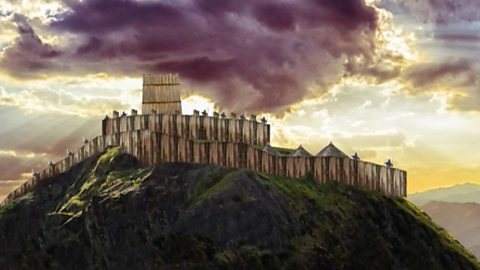Watch: How castles developed and why they were built.
Find out more about how castles developed and why they were built
A medieval castle had two purposes: it was both a fortification and the home of a lord. The first castles were just earthwork enclosures.
Later earth mounds and timber towers were built forming a type of castle called a motte and bailey.
However the timber constructions were vulnerable to fire so shell keeps were built to protect the wooden structure within a stone wall or shell.
During the time when the motte and baileys were being built, powerful noblemen were constructing the Norman great towers.
There was no tactical reason for building them so high. The great tower in all its forms became a symbol of power and nobility.
The curtained wall was one of the castle’s most important defensive feature. At first, it was just a wall with a crenelated parapet but over time the defences were developed and more towers were added.
Fighting platforms were built, first from timber and later stone. At the same time, gateways evolved from simple openings within towers to twin towered gateways, keeps in their own right.
And castles built with an outer wall around the curtain wall were known as concentric castles. Inside domestic life often centred around the Great Hall where the wealthy could entertain guests with lavish feasts.
In the case of fortified manor houses, battlements were more for show than defence.
Medieval castles were considered so prestigious that the style was revived by rich men who wanted to appear as powerful as the noblemen of the middle ages.
Early castles
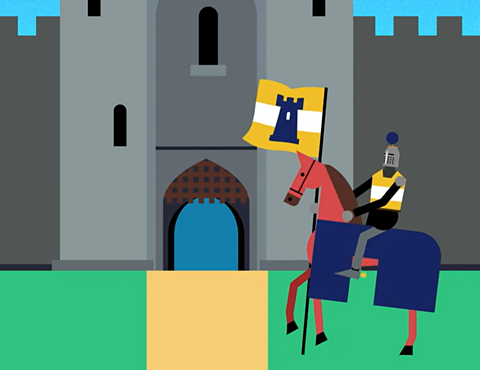
In 1066 England was invaded by Duke William the Conqueror and the Normans.
There were only around 10,000 Normans out of two million people in England.
Duke William built castles to keep control. Not many people in England at that time knew much about castles.
Hundreds of castles were built all across Britain in towns and river crossings.
At first castles were made from wood but the main ones were built of stone. Some of them are still famous today.

How were castles built?
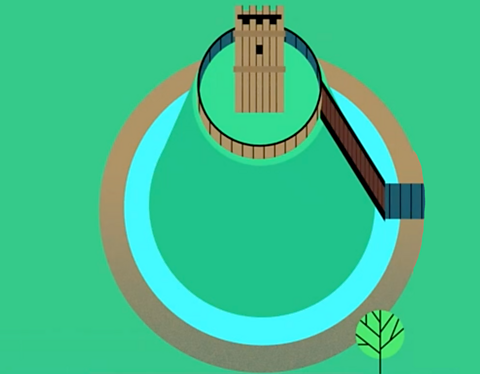
The earliest castles were called 'motte and bailey’ castles. They were built on a mound called the motte, with an outer stockade called the bailey.
Stone castles had a ‚Äòk±±±Ë‚Äô or main tower, with an outer gate called a barbican.
William the Conqueror built the Tower of London, one of the most famous stone castles.
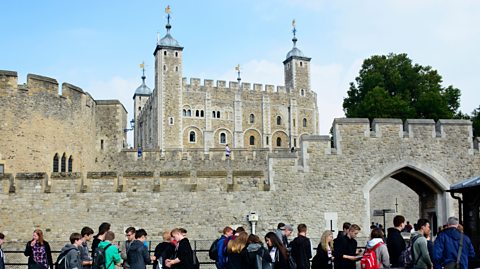
Sieges
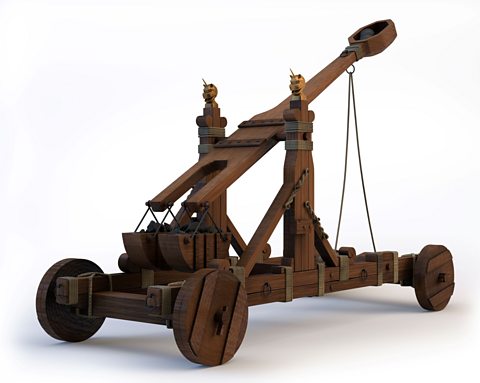
Castles had to be captured by siege. This means by attacking, surrounding and isolating them.
Powerful lords sometimes rebelled against the King and used their castles as bases.
Siege weapons included giant catapults called trebuchets, cannon, battering rams, and siege towers.
Sieges could last weeks or even months.
During the siege of Stirling Castle, King Edward I of England ordered the world's biggest ever trebuchet to be built. It was called the Warwolf.


Famous castles
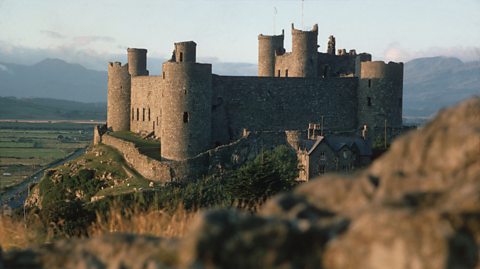
Edward I conquered Wales and built the largest castles in Britain at Harlech, Conwy and Caernarfon.
Dover Castle is on the site of a Roman lighthouse (a Pharos) and remained a military base until the 1960s.
The 1266 siege of Kenilworth Castle in Warwickshire lasted six months.
The Tower of London has been used as a palace and a prison. Elizabeth I was held there when she was a young princess. Guy Fawkes was a prisoner in the tower after he tried to blow up the Houses of Parliament.

Did you know?
- Hundreds of people lived in the larger castles, not just soldiers.
- There were families and children.
- People that lived in the castle grounds had different jobs such as: blacksmiths who made things with metal, farmers and tradesmen.
- During the Tudor era Henry VIII used Conwy Castle as a prison and a guest house!
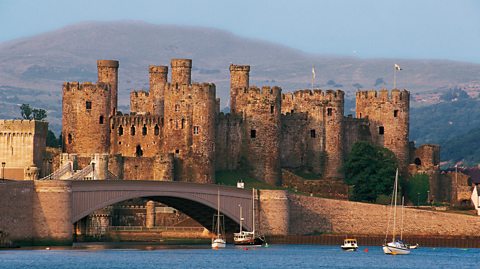
Activity: Castles quiz
Play Bitesize Primary games. game
Fun and educational primary games in science, maths, English, history, geography, art and design, computing and modern languages.

More on Castles
Find out more by working through a topic
- count2 of 2
